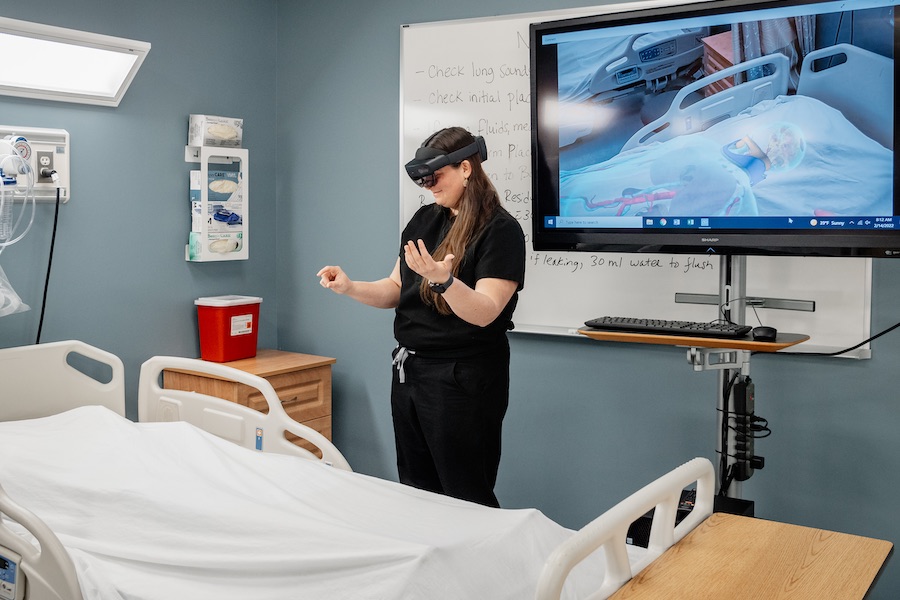For the last couple of decades, Virtual Reality (VR) has gained a foothold in gaming and entertainment. VR delivers on the promise of an immersive experience that excites the senses.
But fun and games aside, Virtual Reality (VR) is also becoming a serious application for training future healthcare professionals as they learn how to treat patients.
Students in the Anderson University College of Health Professions are using the HoloLens, a mixed (virtual) reality headset developed by CAE Healthcare to learn about assessing and treating patients. Dr. Don Peace, Dean of the College of Health Professions, feels blessed that students can learn from this valuable technology that adds a new dimension to their healthcare education. He thanks the Fullerton Foundation for their generous support that made this experience possible for students.
Dr. Peace said, “The Fullerton Foundation is a wonderful partner that has supported Anderson University and the College of Health Professions for many years. The School of Nursing (Graduate and Undergraduate, School of Physical Therapy and the Center for Medical Simulations) have all benefited by the support with technology needs and teaching equipment since 2016. We are very grateful for their support.”
“This opens up a whole new realm,” said Jean Foltz, certified healthcare simulations operations specialist. Foltz notes that students can view the movement of blood clots and also do virtual anatomical dissections, viewing organs such as the heart in three dimensions and watching blood flow through the arteries. As students manipulate parts of their virtual patient, a voice gives guidance as they assess and administer treatment for heart attacks, strokes or other emergency scenarios. Facial expressions of the virtual patient and realistic movement seen within the anatomy add realism to the experience.
According to Kelli Hembree, coordinator for Center of Medical Simulation at the Anderson University College of Health Professions, the technology currently offers six realistic emergency scenarios, including myocardial infarction, pulmonary embolism, tension pneumothorax with internal bleeding, stroke, closed-head injury and sepsis.
“This augmented reality really provides our students a learning opportunity that tracks the students’ hand and eye movement so they can perceive a floating hologram in front of them and reach out to resize or reposition the image. As a result, HoloLens2 helps the learning interaction with people, places and things in a natural way,” Hembree said. “This technology provides students a comfortable, easy-to-fit headset for extended use and an instinctual ability to touch, grasp and move anatomy in ways that feel natural. The system provides the learner the capacity to move freely with no wires or external packs to hamper the learning process.”
Incidentally, Foltz commented that students who are into gaming readily grasp the HoloLens2 as they’re learning to work with patients.

